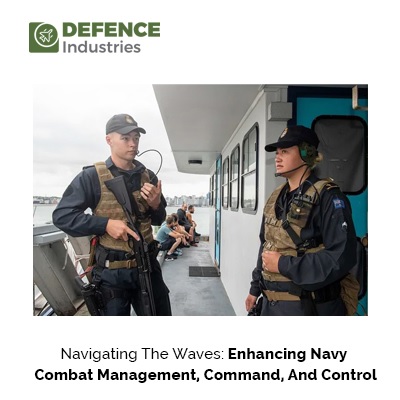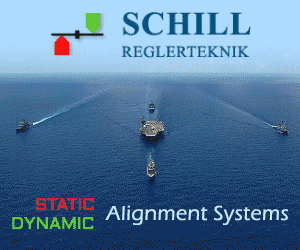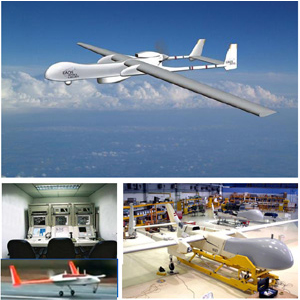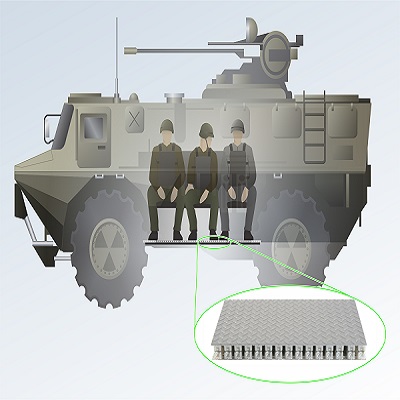Articles
Navigating the Waves: Enhancing Navy Combat Management, Command, and Control

Introduction
In the dynamic theater of naval operations, where split-second decisions can determine success or failure, the role of combat management, command, and control (C2) is paramount. Naval forces worldwide are constantly seeking ways to enhance their capabilities in these areas, leveraging technological advancements, innovative strategies, and lessons learned from past engagements. This article delves into the key aspects of enhancing Navy combat management, command, and control, exploring the challenges, opportunities, and future trends shaping this critical domain.
Challenges in Navy Combat Management
One of the primary challenges in Navy combat management is the complexity of modern naval operations. Naval forces operate in diverse environments, from open seas to littoral zones, facing threats ranging from conventional naval forces to asymmetric threats like piracy and terrorism. Managing these diverse threats while maintaining situational awareness and operational effectiveness is a daunting task.
Another challenge is the integration of various sensors, platforms, and communication systems into a coherent C2 architecture. Naval forces rely on a multitude of assets, including ships, submarines, aircraft, and unmanned systems, each equipped with its sensors and communication suites. Integrating these disparate elements into a unified C2 system requires robust interoperability and data fusion capabilities.
Additionally, the rapid pace of technological evolution presents challenges and opportunities. While advancements in sensor technology, data analytics, and artificial intelligence (AI) offer new capabilities for C2, they also require continuous adaptation and integration into existing systems.
Opportunities for Enhancement
Despite these challenges, there are significant opportunities for enhancing Navy combat management, command, and control. One key opportunity lies in leveraging data-driven decision-making. By harnessing the vast amount of data generated by sensors, platforms, and intelligence sources, naval commanders can gain real-time insights into the operational environment, enabling more informed and timely decisions.
Another opportunity lies in the integration of AI and machine learning algorithms into C2 systems. These technologies can analyze complex data sets, identify patterns, and provide predictive analytics, enhancing situational awareness and enabling proactive decision-making.
Furthermore, advancements in network-centric warfare concepts offer opportunities for improved C2 capabilities. Networked systems allow for seamless information sharing and collaboration among naval assets, enabling distributed operations and enhanced decision-making agility.
Technological Advances
Several technological advances are driving the enhancement of Navy combat management, command, and control. One such advance is the development of advanced sensor systems, including radar, sonar, and electro-optical sensors. These sensors provide comprehensive situational awareness, enabling naval forces to detect and track threats effectively.
Another key technology is the use of unmanned systems, such as drones and unmanned surface vessels (USVs). These systems extend the reach of naval forces, gather intelligence, and perform various missions, reducing risk to human personnel and enhancing operational capabilities.
Furthermore, advancements in communications technology, such as secure satellite communication systems and high-bandwidth networks, enable seamless connectivity and information sharing among dispersed naval assets.
Best Practices in C2 Optimization
To optimize Navy combat management, command, and control, several best practices can be adopted:
Interoperability: Ensuring interoperability among various naval platforms and systems is crucial for effective C2. Standardized communication protocols and data formats facilitate seamless integration and information exchange.
Training and Simulation: Continuous training and simulation exercises are essential for C2 optimization. Simulated scenarios allow naval personnel to practice decision-making in diverse operational environments, enhancing readiness and effectiveness.
Cybersecurity: Protecting C2 systems from cyber threats is paramount. Robust cybersecurity measures, including encryption, intrusion detection, and network segmentation, are critical to maintaining operational integrity and confidentiality.
Human-Machine Collaboration: Leveraging AI and machine learning for decision support can enhance human-machine collaboration. C2 systems should be designed to augment human decision-making rather than replace it, leveraging AI capabilities for data analysis and predictive analytics.
Challenges and Limitations
Despite the opportunities presented by technological advancements, there are also challenges and limitations to consider. One challenge is the need for secure and resilient communication networks. Naval operations often occur in remote or hostile environments where communication infrastructure may be limited or vulnerable to disruption.
Another challenge is the ethical and legal considerations surrounding the use of AI in C2. Ensuring transparency, accountability, and adherence to international laws and norms is essential when integrating AI into decision-making processes.
Additionally, the complexity of C2 systems and the volume of data generated can lead to information overload and decision paralysis. Effective data management and visualization tools are needed to present relevant information in a clear and actionable format.
Future Trends
Looking ahead, several trends are shaping the future of Navy combat management, command, and control:
Autonomous Systems: The development of autonomous naval systems, including unmanned underwater vehicles (UUVs) and autonomous surface vessels (ASVs), will play a significant role in future naval operations. These systems can perform tasks such as mine detection, surveillance, and reconnaissance, reducing the workload on human operators and enhancing operational capabilities.
AI and Machine Learning: Advancements in AI and machine learning will continue to transform C2 systems, enabling predictive analytics, autonomous decision-making, and adaptive planning capabilities.
Cyber Resilience: Enhancing cyber resilience through robust cybersecurity measures and resilient communication networks will be a priority to protect C2 systems from cyber threats.
Human-Centric Design: Designing C2 systems with a focus on human-machine collaboration and usability will be essential. Intuitive user interfaces, decision support tools, and training programs will enhance the effectiveness of naval personnel in C2 roles.
Conclusion
Enhancing Navy combat management, command, and control is a multifaceted endeavor that requires leveraging technological advancements, adopting best practices, and addressing challenges and limitations. By embracing data-driven decision-making, integrating AI capabilities, and ensuring interoperability and cybersecurity, naval forces can enhance their operational effectiveness and maintain superiority in dynamic maritime environments. The future of Navy C2 is marked by autonomy, AI integration, cyber resilience, and human-centric design, shaping a new era of naval warfare capabilities.









